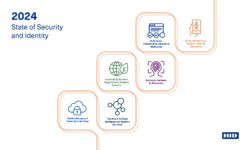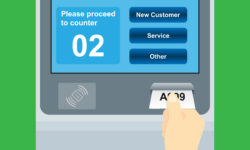U.S. Market for Security Alarms on Pace to Reach $5B by 2021
A report by the firm Research and Markets finds main growth drivers for alarms in increased construction activity and ongoing product development, which will fuel system upgrades.

The consumer market represents the largest share of alarm system sales, accounting for more than two-fifths of demand in 2016, according to Research and Markets.
NEW YORK CITY — Demand for security alarms in the United States is forecast to increase 5.1% annually to $4.9 billion in 2021, according to a report published by Research and Markets.
Among the factors driving growth, increases in building construction are expected to support new system installation, while ongoing product development will drive upgrade demand among existing end users.
The industry study presents historical demand data (2006, 2011 and 2016) and forecasts (2021) by product (life-safety alarms, intrusion alarms, PERS alarms) and market (consumer, trade and distribution, industrial, financial institutions, government, services, offices, educational, healthcare, air transport and lodging).
Market gains will primarily be driven by ongoing advances in construction activity, since new systems are generally installed during initial construction or major renovations. The institutional market, in particular, will benefit as related building expenditures improve from the slow growth of the 2011-2016 period.
Consumers to Account for Largest Alarm System Gains
The consumer market represents the largest share of alarm system sales, accounting for more than two-fifths of demand in 2016. This increase largely stems from the role that life-safety alarms play in residential buildings, according to the report.
Not only do building codes require the installation of some types of life-safety alarms — particularly smoke detectors — in newly constructed residences, but the importance of having alarms that are in good working order also supports replacement and upgrade demand.
Going forward, gains will benefit from ongoing strength in residential construction activity, coupled with greater compliance in replacement rates and market innovations that spur upgrades over simple replacement.
The consumer market also represents the largest single outlet for intrusion alarms. Affluent consumers are more likely to invest in intrusion systems, both because they are able to afford the alarms and the related monitoring contracts, and because they have substantial assets to protect.
Elderly homeowners — a growing market segment — also are more likely to invest in intrusion systems, as they tend to feel more vulnerable and at-risk than do younger people.
PERS Alarms and the Aging Population
The aging population is also a key factor supporting growth in demand for PERS alarms, since they are primarily used by older people who increasingly prefer to age in place. These alarms will see the fastest gains of any product segment, albeit from a much smaller base, according to the report, titled “Security Alarms in the U.S. by Product and Market.”
Advances will benefit from ongoing innovations in product features, ranging from improvements to mobile PERS (mPERS) devices for more active individuals to voice recognition and fall detection technologies in both mobile and at-home alarm models.
Further gains will stem from extending marketing to groups such as latch-key children and abuse survivors, the report states.
If you enjoyed this article and want to receive more valuable industry content like this, click here to sign up for our FREE digital newsletters!

Security Is Our Business, Too
For professionals who recommend, buy and install all types of electronic security equipment, a free subscription to Commercial Integrator + Security Sales & Integration is like having a consultant on call. You’ll find an ideal balance of technology and business coverage, with installation tips and techniques for products and updates on how to add to your bottom line.
A FREE subscription to the top resource for security and integration industry will prove to be invaluable.













